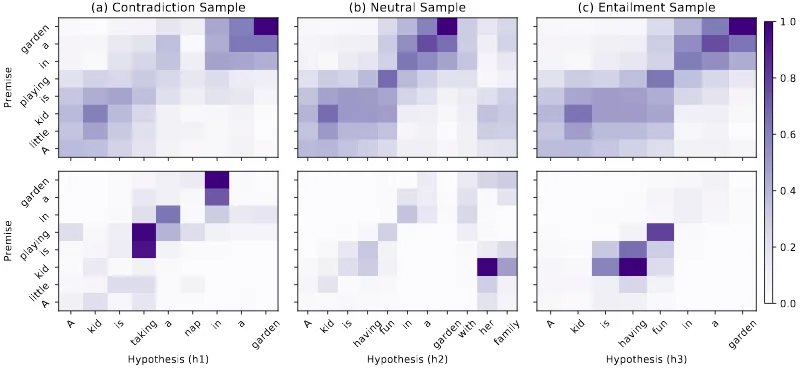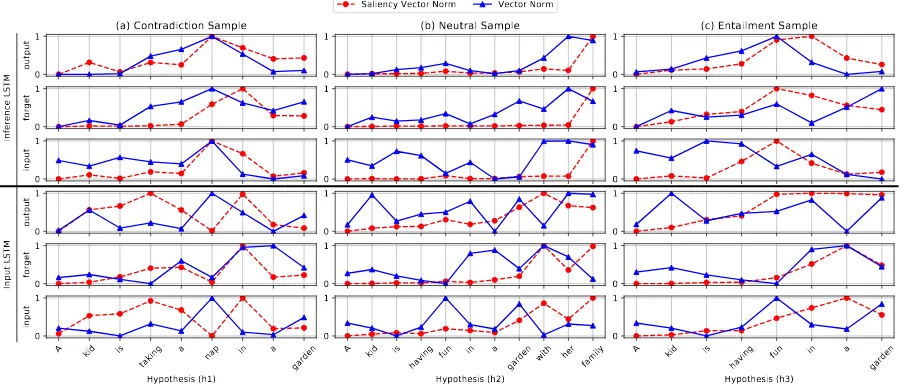Interpreting Recurrent and Attention Based Neural Models: a Case Study on Natural Language Inference
Full text
Figure



Related documents
• Speed of weaning: induction requires care, but is relatively quick; subsequent taper is slow • Monitoring: Urinary drug screen, pain behaviors, drug use and seeking,
Results of the survey are categorized into the following four areas: primary method used to conduct student evaluations, Internet collection of student evaluation data,
Different configurations of hybrid model combining wavelet analysis and artificial neural network for time series forecasting of monthly precipitation have been developed and
Hence, we hypothesize that patients’ switching behavior across hospitals will be associated with an increase in duplicate tests due to lack of access to their
It has also been suggested that three particular core networks detected during resting state activity participate in higher cognitive functions; that is, the central-executive
For the poorest farmers in eastern India, then, the benefits of groundwater irrigation have come through three routes: in large part, through purchased pump irrigation and, in a
Grandchildren with both depressed parent and grandparent, who are at particularly high risk for psychopathol- ogy ( Weissman et al. 2005 ), showed greater alpha asymmetry,
3.1 Accidental transport deaths of farmers and farm workers Cause of Death data produced by the Australian Bureau of Statistics allows analysis of injury-related fatalities